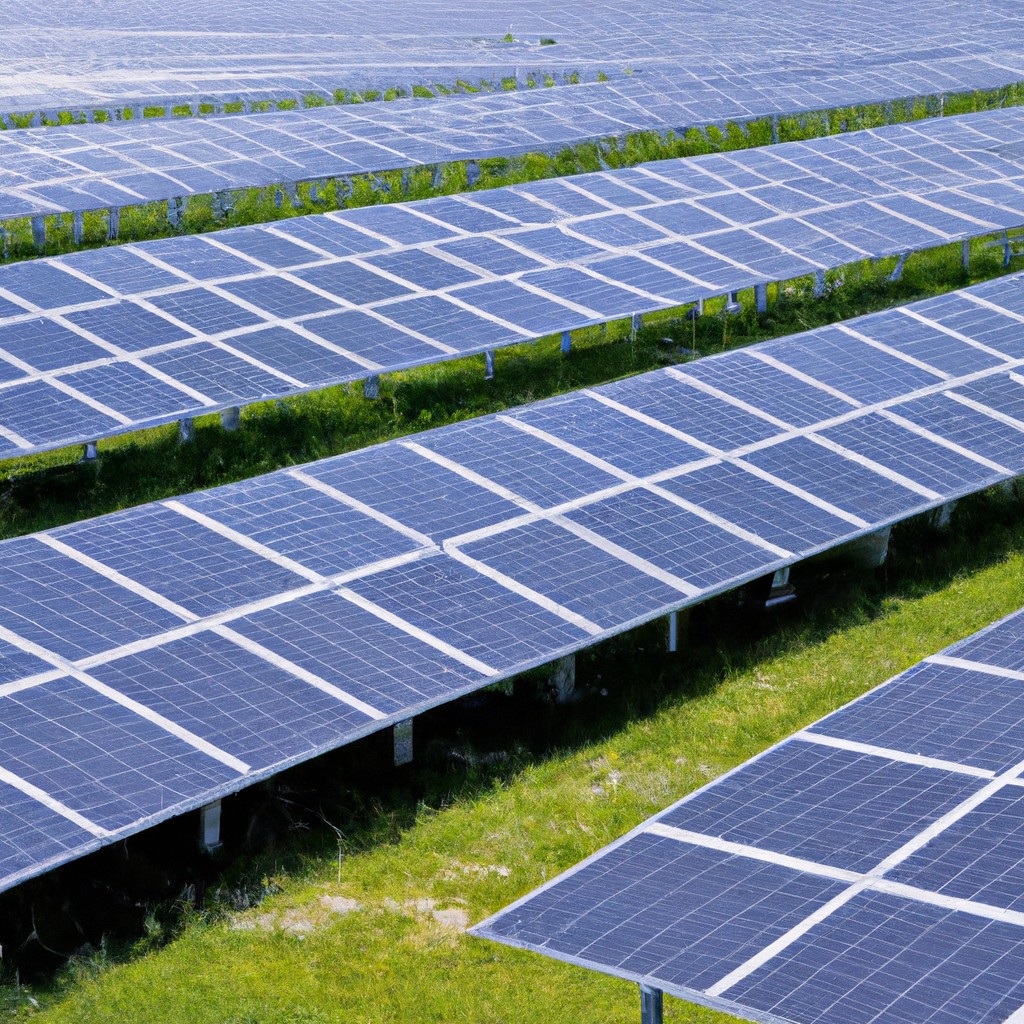Learn how a solar array transforms sunlight into usable electricity for your home or business, and discover the basics of this incredible green technology.
Key takeaways:
- Solar arrays are collections of connected solar panels that capture sunlight and convert it into electricity.
- Photovoltaic cells within solar panels convert sunlight into DC electricity.
- Inverters transform DC electricity into AC electricity for home appliances.
- Other components of a solar array system include racking and mounting systems, wiring, and monitoring systems.
- The cost of solar arrays can vary based on size, quality, location, incentives, and maintenance.
What Is a Solar Array?

Imagine a giant, sun-soaking sponge. That’s basically what we’re talking about here. A collection of solar panels connected together, designed to capture sunlight and convert it into electricity. Simple as pie.
These arrays vary in size. Think anything from a cozy rooftop setup for your home to those sprawling solar farms that seem to stretch for miles. Each panel in the array works together, like teammates in perfect harmony, to maximize energy production.
In essence, a solar array is the big picture version of individual solar panels. By linking multiple panels, the system harvests more sunlight, which means more power. It’s like assembling your own energy-generating dream team—complete with MVPs that turn sunlight into savings.
How Does a Solar Array Work?
By basking in the sunlight, solar arrays perform their magic. Here’s the quick rundown:
First, sunlight hits the solar panels, which are made up of photovoltaic cells. These cells are the true wizards here, converting sunlight into direct current (DC) electricity. Think of them like sunlight gobblers.
Now, DC electricity isn’t too friendly with home appliances, which prefer alternating current (AC). Enter the inverter, our electricity translator. It turns DC into AC faster than you can say “sunshine.”
Once converted, this clean, green electricity flows through your home, powering everything from your fridge to your Wi-Fi. If there’s extra, it’s sent to the power grid, earning you some brownie points—sometimes even actual money!—from your utility company.
What Are the Components of a Solar Array System?
Picture a solar array system as a team of superheroes, each with its own special powers. First up, the solar panels. They’re the flashy stars, converting sunlight into electricity. You could think of them as the face of the whole operation.
Next, we have the inverters. These gadgets are the translators of the team. They take the direct current (DC) electricity produced by the panels and transform it into alternating current (AC) electricity for your home’s appliances. Without inverters, your fridge would be very unimpressed.
Then, there are the racking and mounting systems. Think of them as the unsung heroes that provide a sturdy base, holding the solar panels in place. It’s like building a sturdy treehouse for your panels to bask in sunlight.
We can’t forget the wiring. These are the networkers, connecting everything and ensuring the electricity flows smoothly from the panels to your home. No power without the wires.
Finally, there’s the monitoring system. This tech-savvy sidekick keeps an eye on your system’s performance, making sure everything runs efficiently. It’s the vigilant watchdog in your solar setup.
Each component plays a vital role in a solar array system, working in harmony to deliver renewable energy straight to your doorstep.
How Much Do Solar Arrays Cost?
Costs can vary faster than a cheetah on roller skates. Several factors influence the price tag.
Firstly, consider the size. Smaller systems designed for a cozy cabin in the woods will be cheaper than a large-scale array that could power a small village—or your neighbor’s endless holiday lights.
Quality, too, plays a key role. High-efficiency panels that turn more sunlight into electricity might cost more upfront but save you in the long run.
Location is crucial. Installing an array in sunny Arizona might cost less over time compared to cloudy London. More sun means more power and quicker returns on investment.
Also, don’t forget incentives. Government rebates and tax credits can significantly reduce costs. Who doesn’t love a good discount?
Lastly, think about maintenance. Most systems are low maintenance, but occasional repairs might add a tiny bit to your budget. Better to plan for that now before your system decides to take an unexpected vacation.
Solar Array Installation Process
First things first, site assessment. A solar expert will visit to check out your rooftop or your backyard, all the while subtly judging your lawn gnome collection.
Next, it’s time for the design phase. Engineers will work their magic, mapping out the most efficient arrangement to catch those sunrays. It’s basically the solar system’s version of feng shui.
Permits and paperwork come next. Sadly, you can’t just slap a solar array up and call it a day. Your local government probably has a form for every photon.
Site preparation follows. That might mean reinforcing your roof or setting up some ground mounts. Think of it as a spa day for your house.
Finally, installation day! The crew will secure the panels, connect the inverters, and make sure everything’s perfect. The inverter is kind of like the translator for your solar-powered party, converting the sun’s DC gossip into the usable AC language your home understands.
Inspection and activation wrap things up. A final round of approvals ensures everything’s safe and ready. Then, voila! You’re powered by sunshine, and your energy bill might even send you a thank-you card.




